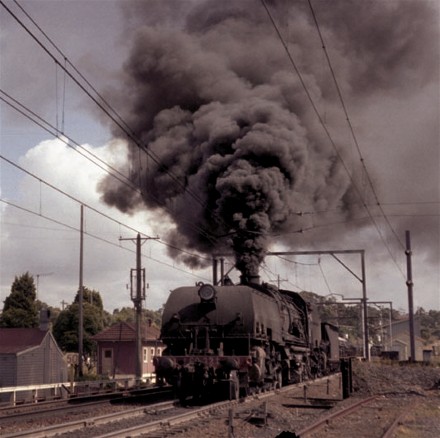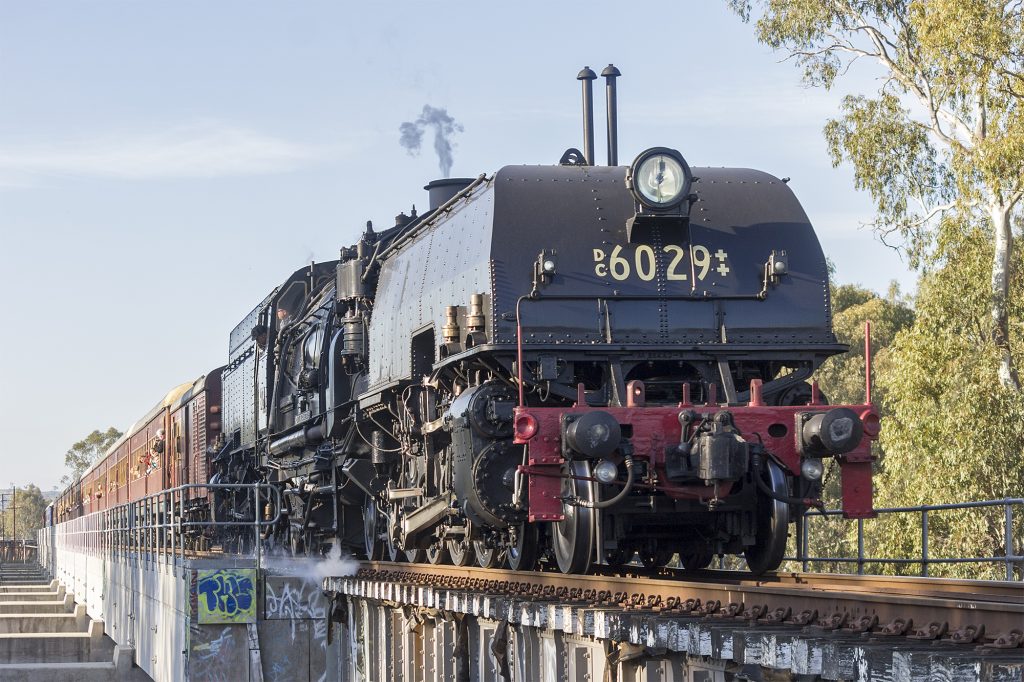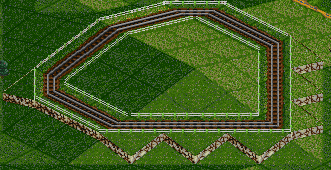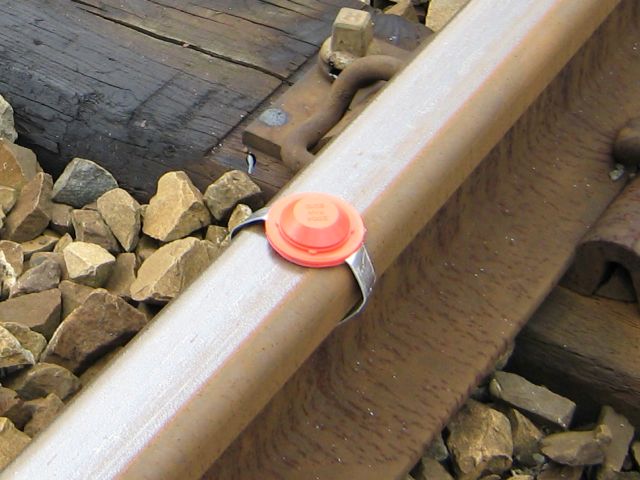A puzzle that the steam locomotive enthusiasts among you (you’re out there, right?) might stand a chance at solving:
The picture below is of “6040”, the last steam locomotive to be built for the Department of Railways New South Wales in Australia. She was in service as a coal/goods transporter from 1957 through 1967 before the increase in the use of diesel on the railways lead to the death of steam. She was eventually rescued and displayed by the New South Wales Railway Museum, which is where the photo was taken. There, starting from her 50th birthday, a team of volunteers have been restoring her. But that’s perhaps not the thing that’s most-unusual about her, or her class (AD60).

I’ve highlighted on the photo a feature that you’ve probably never seen before, even if you’re of an inclination to go “Ooh, a steam loco: I’mma have a closer look at that!”. What you’re seeing is an open pipe (with a funnel-like protrusion at one end) connecting the area behind the leading wheels to the cab. What’s it for? Have a think about it as you read the rest of this post, and see if you can come up with the answer before I tell you the answer.

These pipes weren’t initially fitted to “6040” nor to any of her 41 sisters: they were added later, once the need for them became apparent.
If you’re thinking “ventilation”, you’d be wrong, but I can see why you’d make that guess: the AD60 is an extremely long locomotive, and sometimes long steam locomotives experience ventilation problems when going through tunnels. Indeed, this was a concern for the AD60 and some were fitted with ventilation pipes, but these carried air from the front of the engine back to the cab, not from down near the wheels like this mystery pipe would. However, the pipe does connect through to the cab…

It’s worth taking a moment though to consider why this is such a long locomotive, though: you may have noticed that it exhibits a rather unusual shape! The AD60 is a Garratt locomotive, an uncommon articulated design which places a single (usually relatively-large) boiler straddled in-between two steam engines. Articulating a locomotive allows a longer design to safely take corners that were only rated for shorter vehicles (which can be important if your network rolled out narrow-gauge everywhere to begin with, or if you put too many curves onto a mountain railway). Garratt (and other articulated steam) locos are a fascinating concept however you look at them, but I’m going to try harder than usual to stay on-topic today.

And by the time you’re articulating a locomotive anyway, engineer Herbert William Garratt reasoned, you might as well give it a huge boiler and two engines and give it the kind of power output you’d normally expect from double-heading your train. And it pretty-much worked, too! Garratt-type articulated steam locomotives proved very popular in Africa, where some of the most-powerful ones constructed remained in service until 1980, mountainous parts of Asia, and – to a lesser extent – in Australia.

Indeed: it’s the combination of length of this loco and its two (loud) engines that necessitated the addition of the “mystery pipe”. Can you work out what it is, yet? One final clue before I give the game away – it’s a safety feature.
While you think about that, I direct your attention to this photo of the Я-class (of which only one was ever built), which shows you what happens then the Soviet Union thought “Da, we have to be having one of these ‘Garratt’ steam engines with the bending… but we have also to be making it much bigger than those capitalist dogs would.” What a monster!

In the 1840s, engineer Edward Alfred Cowper (who’d later go on to design the famous single-arch roof of Birmingham New Street station which lasted until its redevelopment in the 1960s) invented a device called the railway detonator. A detonator is a small explosive charge that can be attached to a railway line and which will explode when a train drives over it. The original idea – and still one in which they’re used to this day – is that if a train breaks down or otherwise has to come to a halt in foggy conditions, they can be placed on the track behind. If another train comes along, the driver will hear the distinctive “bangs” of the detonators which will warn them to put on the brakes and stop, and so avoid a collision with the stopped train ahead.
They’re the grown-up equivalent of those things kids used to be able to buy that went bang when you threw them on the ground (or, in a great example of why kids shouldn’t be allowed to buy them, at least in the case of a childhood friend of mine, detonated them by biting them!).
But when your cab is behind not only the (long) boiler and (even longer and very loud) articulated engine of an AD60, there’s a very real risk that you won’t hear a detonator, triggered by the front wheels of your loco. Your 264-tonnes of locomotive plus the weight of the entire train behind you can sail on through a trio of detonators and not even hear the warning (though you’re probably likely to hear the bang that comes later, when you catch up with the obstruction ahead).

The mystery tubes on the AD60 were added to address this problem: they’re a noise-carrier! Connecting the area right behind the leading wheels to the drivers’ cab via a long tube makes the driver more-able to hear what’s happening on the rails, specifically so that they can hear if the engine begins to roll over a detonator. That’s a crazy bit of engineering, right? Installing a tube along most of the length of a locomotive just to carry the sound of the wheels (and anything they collide with) to the driver’s cab seems like a bizarre step, but having already-constructed the vehicle in a way that introduced that potential safety problem, it was the simplest and lowest-cost retrofitting.
In other news: this is what happens when I finish the last exam I anticipate sitting in a long while, this week (I know I’ve said that before, last time I was in the position of finishing a final-exam-before-a-dissertation). Clearly my brain chooses to celebrate not having to learn what I was studying for a bit by taking a break to learn something completely different.
0 comments